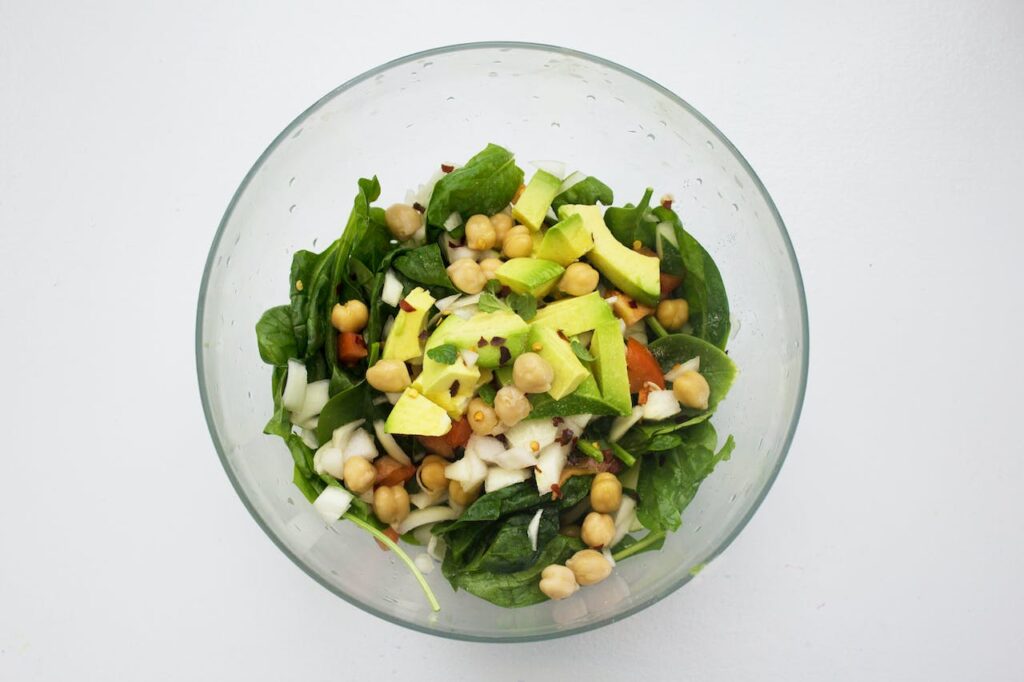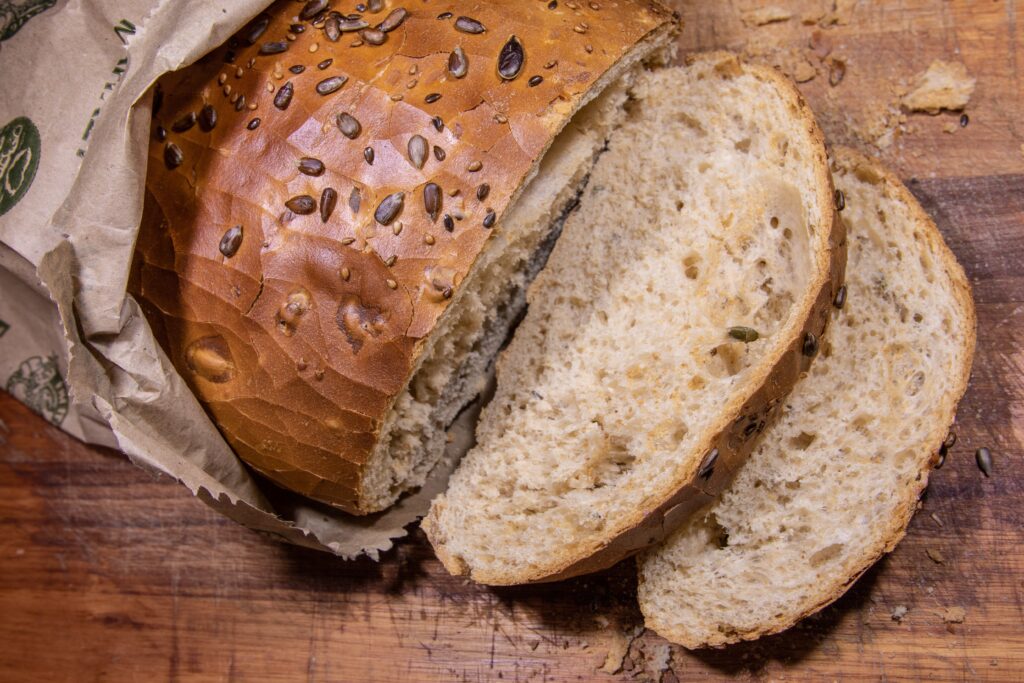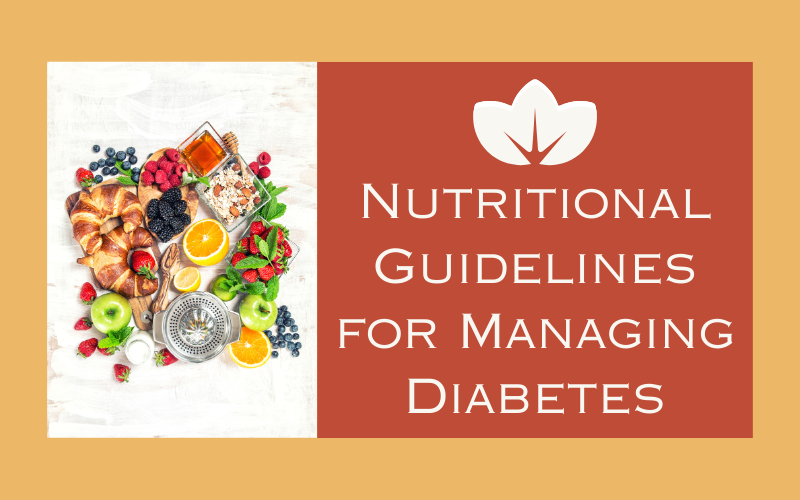Introduction
Welcome to the not-so-secret world of managing diabetes, where every bite, sip, and snack can feel like a strategic decision in the game of blood sugar balance. But fear not! Navigating this landscape doesn’t have to be a journey through a dietary minefield. Instead, let’s embark on an adventure – one that’s peppered with humor, sprinkled with sarcasm, and packed with practical wisdom.
In this guide, we’ll dance through the complexities of carbs, waltz around the world of water, and tango with the truths about fats. We’ll decode the mysteries hidden in food labels, unravel the riddles of meal timing, and even take a cheeky peek at alcohol’s role in diabetes management. Think of this as your map to the treasure trove of diabetes-friendly eating – a journey that’s as enjoyable as it is informative.
So, grab a comfy seat (and maybe a healthy snack), and let’s dive into the delightful, sometimes daunting, but always doable world of managing diabetes with diet. It’s time to turn those dietary dos and don’ts into a thrilling quest for health and happiness!
What the Heck is Diabetes Anyway?
Welcome to the world of diabetes, where sugar isn’t just something you debate adding to your coffee, it’s the main character in the drama series that is now your dietary life. Imagine if your body suddenly decided that processing sugar was as passé as flip phones or DVDs. That’s diabetes in a nutshell.
There are two main types of this plot twist: Type 1 and Type 2. Type 1 is like your pancreas decided to go on a lifelong strike – no more insulin production, thank you very much. It’s like your body decided to live its own version of ‘The Hunger Games’, but with insulin. Then there’s Type 2, which is a bit sneakier. Your body still makes insulin, but it’s about as effective as bringing a toy sword to a real battle. It tries, bless its heart, but it’s just not cutting it.
Managing diabetes is like being handed the script for a play you never auditioned for. You’ve got to learn your lines (carb counting), master your timing (meal planning), and sometimes improvise like a champ (hello unexpected birthday cake). But here’s the kicker: it’s not all doom and gloom. Getting to grips with this can turn you into a bit of a blood sugar whisperer. You start to understand food in a way you never did before, like suddenly speaking a new language – fluently.
So, as you embark on this journey of pricks (finger pricks, to be clear), swipes (no, not on Tinder, but of glucose meters), and the occasional sighs (because let’s face it, nobody really likes diet restrictions), remember that every great hero’s journey starts with a bit of chaos. And who knows, by the end of this, you might just be the hero in your own sugar-free saga!
The Diet Dance – Navigating the Blood Sugar Ballet
Welcome to the grand ballroom of diabetes management, where you’re about to learn the intricate steps of the ‘Diet Dance’. It’s a bit like salsa mixed with a tango, only your dance partner is your blood sugar level, and it’s got two left feet.
Managing your diet with diabetes is less about strict rules and more about mastering the rhythm of eating right. Imagine your blood sugar is a fickle dance partner. One moment it’s soaring high with the quickstep, thanks to that sneaky donut you flirted with at the coffee shop, and the next, it’s slow waltzing down from a healthy salad. The goal here is to keep your blood sugar in a smooth, elegant waltz – controlled, predictable, and without any dramatic dips or spikes that make you feel like you’re part of a dance floor catastrophe.
You’ll become a dietary DJ, mixing in the right amount of carbs, proteins, and fats to keep the beat going. Carbs are like the catchy tune – you need them to keep the energy up, but too much and it turns into a chaotic free-for-all. Proteins and fats are the rhythm section, keeping the beat steady and making sure your blood sugar doesn’t decide to go off on a solo breakdance.
Now, don’t worry if you step on a few toes initially (or in this case, miscount your carbs). Even the best dancers started as beginners. The key is to keep an eye on your dance card (aka your meal plan) and remember that every meal is a chance to perfect your steps. You’ll learn to twirl around the sugary temptations, sidestep the carb-loaded traps, and maybe even throw in a fancy spin with some diabetic-friendly desserts.
So, put on your dancing shoes and get ready to cha-cha with your chicken salad, tango with your tofu, and waltz with your watermelon. This dance may seem daunting at first, but with a bit of practice, you’ll be gliding across the blood sugar ballroom like a pro. And who knows, you might even start to enjoy this new rhythm in your life – just watch out for those unexpected salsa dips!
Carbs – The Frenemies
Ah, carbohydrates. They’re like that friend who’s a blast at parties but somehow always lands you in trouble. In the world of diabetes management, carbs are both the life of the party and the troublemakers you need to keep an eye on. They’re the frenemies in your dietary social circle.
Carbohydrates are your body’s main energy source, the fuel that keeps you running. But when you have diabetes, your body reacts to carbs like a drama queen at a surprise party – with a lot of over-the-top responses. You need them, sure, but too many and your blood sugar spikes like it’s on a caffeine buzz. Too few, and it crashes, like the energy dip after a sugar high.
The trick is to find the sweet spot – and no, we’re not talking about donuts. We’re talking about the right kind of carbs, in the right amounts. Whole grains, fruits, veggies, and legumes are the kind of friends you want to invite over for dinner. They’re the complex carbs, the ones that release energy slowly and keep your blood sugar levels on an even keel, like a responsible friend who makes sure you get home safe after a night out.

But beware of the simple carbs – the sugars and refined grains. They’re like the friends who encourage you to have ‘just one more’ drink. They cause your blood sugar levels to spike and crash, leading to a rollercoaster ride you didn’t sign up for.
Carb counting becomes your new party trick. It’s not just counting calories, it’s understanding the impact of different types of carbs on your blood sugar. It’s about reading labels, measuring portions, and sometimes making tough choices (like saying goodbye to that second slice of cake).
Remember, not all carbs are created equal. Choosing the right friends (carbs) in your diet is key. It’s about quality, not just quantity. So, the next time you’re at a meal, think of it as a social event for your food. Who are you going to let in? Choose wisely – your blood sugar will thank you for it.
Carbs – The Good, The Bad, and The Tasty
In the grand opera of carbohydrates, there are heroes, villains, and those sneaky characters that can swing either way, depending on the plot. Let’s break it down into a cast of characters you might find in a carb-filled soap opera.
The Good: These are your whole grains, your legumes, fruits, and vegetables. They’re like the dependable best friends in a sitcom. They’re there for you, providing long-lasting energy, keeping your blood sugar levels as steady as a seasoned tightrope walker. These carbs come packed with fiber, vitamins, and minerals. Think of whole wheat bread that doesn’t just collapse into a sad, doughy mess when you make a sandwich, or the beans in your chili that offer more than just musical side effects. They’re the kind you invite over for a healthy dinner party, knowing they’ll get along splendidly with your blood sugar.
The Bad: Enter the refined grains and added sugars. They’re the carbs that have had most of their good qualities stripped away, like a charming character in a TV show who suddenly turns into the villain. White bread, sugary cereals, pastries, and sodas are their gang. They hit your bloodstream faster than a gossip spreads in a small town, causing your blood sugar to spike and crash in a dramatic cycle of highs and lows. They’re the kind of carbs that seem like a good idea at the time but leave you with regret and a blood sugar hangover.
The Tasty: These are the carbs that can swing either way. They’re like the charming side characters who sometimes help the hero and sometimes have their own agenda. Think of foods like potatoes, rice, or pasta. They can be part of a healthy diet when they’re in their unprocessed form and paired with the right ensemble cast of foods. But dress them up with too much fat, salt, or sugar, and they can quickly turn to the dark side. It’s all about the company they keep and the portion sizes you invite to your plate.
Navigating the world of carbs is like being a director of your own culinary movie. You have to choose your cast wisely, give the good guys more screen time, and keep the villains in check. Remember, every meal is an opportunity to create a blockbuster hit for your health, where the good carbs shine, and the bad carbs are left on the cutting room floor.
Fiber: Your Digestive System’s BFF
If carbohydrates are the complex characters in the drama of your diet, fiber is the best friend everyone wishes they had. Think of fiber as the superhero sidekick of your digestive system, always there to save the day, and often underappreciated.
Fiber comes in two types: soluble and insoluble, both of which deserve their own fan clubs. Soluble fiber is like a smooth operator, dissolving in water and helping to lower glucose levels and blood cholesterol. It’s like having a personal mediator for your blood sugar, gently persuading it to avoid any dramatic spikes. Foods like oats, peas, beans, apples, and carrots are rich in soluble fiber. They’re the equivalent of that friend who always knows exactly what to say in a crisis.
Then there’s insoluble fiber, the rough-and-tumble type that doesn’t dissolve in water. It’s more like the bodyguard of your digestive tract, helping everything move along smoothly and keeping constipation at bay. It’s found in foods like whole wheat flour, wheat bran, nuts, and many vegetables. If soluble fiber is the diplomat, insoluble fiber is the bouncer, making sure everything in your digestive system keeps moving as it should.

Now, why is fiber so important in a diabetes-friendly diet? Because it’s like the moderator at a debate – it slows down the absorption of sugar, helping to control your blood sugar levels. Plus, it keeps you feeling full longer, which is a boon when you’re trying to maintain a healthy weight. It’s the friend who tells you, “You don’t need that extra slice of pizza,” and actually makes you listen.
Adding fiber to your diet is like building a dream team for your gut. Start with a bowl of oatmeal, throw in some berries (fiber and antioxidants, double win!), or choose whole-grain bread over white for your sandwich. It’s like hosting a party in your stomach where the only guests are those who contribute positively to your blood sugar levels.
The Portion Distortion
Ah, portion sizes – the sneaky tricksters of the dining world, especially in the land of diabetes management. If you’ve ever looked at a serving size and thought, “That’s just a warm-up, right?”, you’re not alone. Welcome to the confusing world of portion distortion, where more often than not, our eyes are bigger than our stomachs (and our blood sugar meters).
The concept of portion control can feel like learning to speak a foreign language, especially when a single serving of pasta looks more like a garnish than a meal. But in the grand scheme of blood sugar ballet, portion control is like the choreographer, ensuring every dancer (or food item) is in the right place at the right time.
Why is portion control crucial in diabetes management? Well, imagine if your blood sugar levels were a teeter-totter. On one side, you have the food you eat, and on the other, the insulin in your body (whether it’s naturally produced or medically introduced). The goal is to keep this teeter-totter as balanced as possible. Too much food, especially carbs, and whoops – your blood sugar is up in the air, swinging wildly. Not enough food, and your blood sugar dips low, leaving you feeling like a deflated party balloon.
So how do we master this art? It’s all about visual cues and sneaky tricks. For instance, using smaller plates can make a modest portion look more substantial – it’s like dressing to impress but for your food. There’s also the ‘Plate Method’: fill half your plate with non-starchy vegetables, a quarter with lean protein, and the remaining quarter with carbs (the good guys, remember?). It’s like playing Tetris with your food, where each piece fits perfectly into the puzzle of your plate.

And then there’s the good old measuring cup and food scale. Sure, they might make you feel like a contestant on a cooking show, but they’re excellent at keeping your portion sizes in check. Remember, your stomach is not a bottomless pit, even if it sometimes sends you the memo that it is.
In the end, mastering portion control is a bit like being a DJ at a party – you have to read the room (or your body) and adjust the volume (or food) accordingly. It’s a skill that takes practice, patience, and a bit of humor because, let’s face it, sometimes you have to laugh at the absurdity of measuring out half a cup of cereal. But once you get the hang of it, it’s a game changer in managing diabetes. So, embrace the portion challenge – your blood sugar (and your waistline) will thank you!
The Balancing Act – Juggling Carbs, Proteins, and Fats
Picture yourself as a circus performer, the star of the show, and in your hands, you’re juggling three balls: carbs, proteins, and fats. This is the high-wire act of managing a diabetes-friendly diet, where balance isn’t just a nice-to-have, it’s a must-do to keep your blood sugar levels more stable than a table with four perfectly even legs.
Carbs, the energetic, fast-acting performers, are often seen as the villains in the diabetes world, but they’re really just misunderstood. You need them for energy, but it’s all about picking the right type (think whole grains and fiber-rich fruits) and not overloading your plate. Imagine carbs as the sparkly, attention-grabbing ball in your juggling act – essential but best kept in moderation.
Proteins are the steady, reliable performers. They don’t cause your blood sugar to spike like carbs, and they help you feel full longer. They’re like the safety net under your tightrope, providing a sense of security and balance. Lean meats, fish, tofu, and legumes are the stars here. Think of protein as the ball that adds weight to your performance, giving it substance and style.
Then there are Fats, the divas of the dietary world. Some are good, some are bad, but all are necessary in the right amounts. The good fats (like those found in avocados, nuts, and olive oil) help your body absorb vitamins and provide essential fatty acids. But too much, especially the bad kind (hello, trans fats and saturated fats), and your performance can quickly turn from a graceful juggling act into a clumsy fumble. Fats are like the flashy, glittery ball that can make or break your performance – crucial, but always in need of careful handling.
Juggling these three isn’t just about keeping them in the air. It’s about timing, rhythm, and proportion. Too much of one can throw off your entire routine, sending your blood sugar levels into an uncontrolled spiral. The key is to keep them moving in harmony, each element complementing the other, creating a performance that’s as pleasing to your body as it is to your palate.
To perfect this balancing act, think of your plate as your stage. Fill it with colorful vegetables (low in carbs), add a good source of protein, and sprinkle a bit of healthy fat for flair. It’s like choreographing a dance where every nutrient has its part to play, contributing to the overall grace and balance of the meal.
In the end, mastering this juggling act is about making conscious choices, understanding how different foods affect your blood sugar, and enjoying the variety. It’s a skill, an art, and when done right, a little bit of magic. So, step into the spotlight and show the world (and your blood sugar) that you’re the master of this dietary circus!
Sugar and Refined Carbs – The Villains in Disguise
In the cinematic universe of your diet, sugar and refined carbs are the villains dressed in superhero capes. They seem like they’re here to save the day with their sweet taste and quick energy, but spoiler alert: they’re more likely to tie your blood sugar levels to the train tracks than rescue them.
Sugar, the arch-nemesis in this saga, often appears in disguise. It’s not just the white granules you spoon into your coffee; it lurks in sodas, candies, and even those ‘healthy’ fruit juices. It’s like the charming villain in a movie – charismatic and alluring, but with a devious plan to send your blood sugar levels on a rollercoaster ride of doom. And just when you think you’ve outsmarted it by turning to ‘sugar-free’ alternatives, it hits back with artificial sweeteners that can still mess with your body’s sugar-handling capabilities.
Refined Carbs are sugar’s trusty sidekicks, found in white bread, pastries, and other processed foods. These are the carbs that have been stripped of their nutritional value, like a villain who’s lost their backstory. They’re quick to digest, causing a rapid rise in blood sugar, followed by an inevitable crash – the classic hit-and-run tactic of dietary distress.
But here’s the twist in the tale: not all carbs are bad. Your body needs carbs for energy. The trick is to choose complex carbs, the unsung heroes of the story, like whole grains, legumes, and fruits, which break down slowly and keep your blood sugar levels steady.
The battle against these villains is about making smart choices. Swap out that white bread for a whole-grain variety. Choose fresh fruits over sugary snacks. Read labels like a detective on a mission, looking for hidden sugars and refined flours. It’s about being one step ahead of these sneaky antagonists.
Remember, in the epic tale of managing diabetes, sugar and refined carbs are the plot twists you didn’t see coming. But now that you know their true nature, you’re equipped to outsmart them. Keep them out of your dietary script as much as possible, and your blood sugar levels will be more like a peaceful river than a stormy sea. Be the hero of your own story by making choices that keep these villains in the shadows, where they belong.
Fats – The Good, The Bad, and The Yummy
In the delicious drama of your diet, fats are like the complex characters in a TV show – some are heroes, some are villains, and some are just irresistibly naughty. Understanding which fats to cast in the leading role and which to cut from the script is key to managing your diabetes without losing the joy of eating.
The Good Fats are your dietary superheroes. Think of monounsaturated and polyunsaturated fats – the ones found in avocados, nuts, seeds, and olive oil. These fats are like the knights in shining armor for your heart, helping to reduce bad cholesterol and keep your blood sugar levels steady. They’re the kind of fats that deserve a hero’s welcome on your plate. Including them in your meals is like adding a subplot that enhances the whole story, contributing to both the healthiness and the richness of the dish.
The Bad Fats, on the other hand, are the villains lurking in the shadows. Trans fats and saturated fats are the ones to watch out for. They’re often found in processed foods, fast food, and those indulgent treats that tempt you from the dark side. Consuming too much of these fats is like inviting the bad guy to your dinner party – they can increase your bad cholesterol, mess with your heart health, and disrupt your blood sugar control. It’s like a plot twist that no one wants, leading to potential health hazards and cliffhangers.
But then, there are The Yummy Fats, the ones that make your taste buds sing but can be a little tricky to handle. These are often the saturated fats found in butter, cheese, and fatty meats. In small amounts, they can add flavor and texture to your meals, making healthy eating feel less like a sacrifice and more like a treat. The key is moderation. Think of these fats like the charming but slightly rogue side character – great in small doses but potentially disruptive if given too much screen time.
Managing fats in your diet is like being a director of a blockbuster movie. You want the good guys to shine, keep the bad guys in check, and let the yummy ones have their moments without stealing the show. It’s a delicate balancing act – ensuring your meals are as heart-healthy and diabetes-friendly as they are delicious.
So, the next time you’re planning a meal, think about which fats you’re inviting to the table. Opt for the good ones, limit the bad, and enjoy the yummy ones in cameo appearances. This way, you keep your meals both thrilling and nutritious, turning every eating experience into a five-star performance!
The Timing Tango – Why Meal Times Matter
Imagine your daily eating schedule as a carefully choreographed dance – the Timing Tango. In the world of managing diabetes, when you eat can be just as important as what you eat. It’s not just a meal; it’s a rhythmic routine that keeps your blood sugar levels in a graceful, steady glide across the dance floor of your day.
Why does this tango matter? Well, think of your body like an engine that’s constantly running. It needs regular fuel to keep chugging along smoothly. If you skip meals or wait too long between them, your blood sugar can drop lower than a limbo stick at a beach party, leaving you feeling shaky, irritable, or even faint. On the flip side, if you eat too much or too often, your blood sugar can skyrocket, turning your smooth tango into a chaotic jitterbug.
The key is consistency – like hitting the beat at just the right moment in a dance. Regular meal times help regulate your body’s insulin response, keeping those blood sugar levels in check. It’s about finding your rhythm and sticking to it, whether you’re a three-meals-a-day person or someone who prefers smaller, more frequent meals.
But let’s talk about late-night snacking – the forbidden dance of the eating world. We’ve all been there, sneaking into the kitchen for a midnight tryst with the fridge. But in diabetes management, this can lead to blood sugar spikes that disrupt your sleep and your sugar levels – not the dance party you want in your body at 2 AM.
And then there’s the tempo of your meals. Eating slowly, savoring every bite, is like enjoying a slow, romantic waltz. It gives your body time to register fullness, helping you avoid overeating. Gobbling down your food? That’s a frantic salsa, likely to lead to overeating and a post-meal blood sugar spike.
So, how do you master this Timing Tango? Start by setting regular meal times and try to stick to them – it’s like setting a dance routine for your day. Include balanced meals that combine carbs, protein, and fats in harmony. And remember, the dance floor is no place for a feast or famine approach; it’s about consistency, moderation, and enjoying the rhythm of eating right.
In summary, meal timing in diabetes management is a delicate dance – a balance of regularity, quantity, and mindfulness. By mastering this tango, you keep your blood sugar levels in a smooth, graceful flow, turning your daily eating routine into an artful dance that supports your health and well-being.
Hydration – Because You’re Not a Cactus
In the grand desert of life, where managing diabetes is akin to navigating through endless sand dunes, hydration emerges as an oasis of relief. It’s important to remember: you’re a human, not a cactus. Your body needs more than the occasional rain shower to thrive.
Water is the unsung hero in the story of diabetes management, a sidekick that doesn’t wear a cape but does some heavy lifting behind the scenes. Staying hydrated helps your kidneys flush out the excess sugar through urine. Think of water as your body’s personal housekeeper, tidying up and preventing the build-up of unwanted guests (like high blood sugar).
But why is hydration especially crucial for those with diabetes? Picture this: when blood sugar levels rise, your body tries to expel the excess glucose through urine. This process can be as draining as a marathon in the middle of summer, and without enough water, it’s like trying to run that marathon in a heavy woolen suit. Your body needs water to perform this essential task without getting overheated or dehydrated.
Now, let’s talk about the other drinks in the party. While water is the best choice, there are others mingling around the snack table. Unsweetened tea and coffee can join the hydration team, but watch out for the sugary drinks masquerading as hydration helpers. They’re like the party crashers who bring more trouble (in the form of unnecessary sugars) than benefit.
What about diet sodas and other low-calorie drinks? They’re like the acquaintances who aren’t harmful but aren’t particularly helpful either. They might not bring added sugar to the table, but they don’t offer the same benefits as good old H2O.
So, how much water should you drink? While the classic advice is eight glasses a day, it’s not a one-size-fits-all situation. Think of it more like a tailored suit; it should fit your body’s specific needs. Factors like your activity level, the climate you live in, and your overall health dictate how much water you should be sipping.
In conclusion, staying hydrated is like maintaining the fluid grace of a river – it keeps everything flowing smoothly. It’s an easy yet vital part of managing diabetes, helping your body handle blood sugar more efficiently and keeping you feeling good. So, remember, while you may have the resilience of a desert plant in managing diabetes, when it comes to hydration, you definitely need more than a cactus!





Pingback: Unleash Your Potential: Proven Workout Routine and Strategies for Diabetics - diabetes care
Pingback: Is Diabetes a Disability? Exploring the Intersection of Health and Law - diabetes care
Pingback: Light Cooking Recipes: Delicious and Healthy Meals Made Easy - diabetes care
Pingback: Deliciously Healthy: Gestational Diabetes Recipes for Every Meal - diabetes care